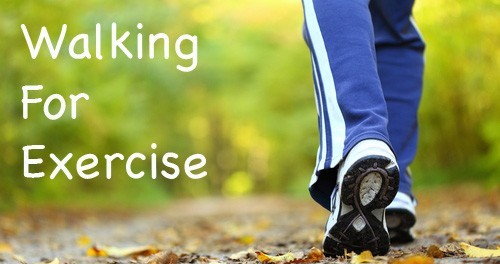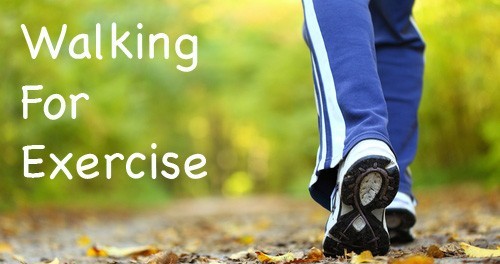Walk Talk Series
Day 68 – Treadmill Walking Guide
Affirmation of the Day
Everyday, and in every way, I continue to improve my way. ”Positive energy is a must for my success”. I plan what is ahead of me, using my time wisely, following through to achieve my goals,success,and improve my soul.
Today’s Walk: Fat Burning Walk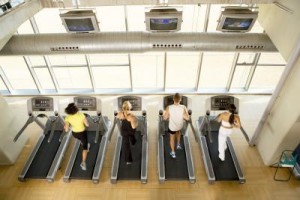
- 45-90 minute walk in the fat-burning zone at 60-70% of your maximum heart rate
- Warm up with 5 minutes at a very easy pace
- Find a safe spot with a wall or pole to do a 5 minute easy stretching routine
- Now resume your walk at a comfortable pace
- End with 5 minutes of gentle stretching
Advanced walkers: Economy Walk
Exercise: Abdominals
 Guide to Walking on a Treadmill
Guide to Walking on a Treadmill
If you are accustomed to walking outdoors, walking on a treadmill may seem dull, or not much of a challenge. However, there are plenty of times when walking on a treadmill is more comfortable or convenient than running outdoors — during extremely hot or cold weather, for example, or if you’re traveling in an unfamiliar town. Treadmills also offer instant feedback on your speed, distance, time and calories burned, which can be very useful. The key, is to create a treadmill workout that will help you meet your training and fitness goals.
Many of you may have a treadmill collecting dust after a few months. Buying a treadmill seemed like a good idea at the time but then you quickly got bored; or maybe you haven’t seen the results you were expecting. In both instances, the problem isn’t the treadmill. The problem is understanding treadmill exercise and staying motivated.
Common Problems with Treadmill Workouts
One common mistake with treadmill exercise is simply stepping on and walking or jogging at the same speed for twenty or thirty minutes. This will quickly make you very tired and very bored. It also doesn’t make for an efficient workout.
Another common mistake is starting out at the pace you want to maintain without warming up and without pacing yourself. Treadmill exercise like this will quickly lead to sore muscles and possibly injuries, not to mention frustration. It also means you aren’t using all of your lower body muscles effectively.
Tips for Safe Treadmill Workouts
There are several important elements to effective treadmill exercise. A few things to keep in mind are: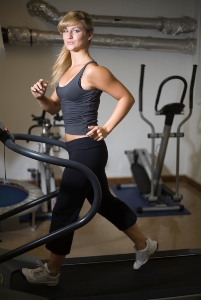
- Always warm up. It is essential to stretch your muscles and warm them up slowly by walking at a speed of no more than 1.5 to 2 mph for a minute or two. Switching from the heels to the toes for thirty seconds each, then stretching out your stride for another minute will help stretch all muscles properly. If you’ve increased your level of fitness after a time, you can increase the speed of your warm-up to as fast as 4 mph, which is basically power-walking or a light jog.
- Increase your workout slowly. You should stay at one level for four weeks before moving on to the next level of difficulty. Any faster and you risk over-tasking your muscles or sustaining an injury. This is one of the most important tips for treadmill workouts to keep in mind. Burn-out is frequently the result of trying to rush to results.
- Always cool down. Hopping off the treadmill after running and sitting down is an invitation for muscle cramps or worse. You need to slow down the pace and allow your muscles and heart rate to return to normal while you are moving.
Dizziness During A Treadmill Workout
Using a treadmill can be uncomfortable if you experience any disorientation or dizziness. It is not an uncommon occurrence, especially for newcomers to the workout.
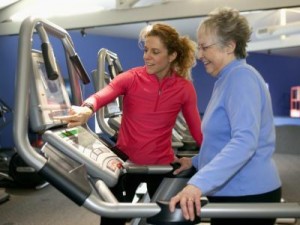 Causes – The cause of dizziness can be anything from health reasons to mechanics of the machine. It might simply be a bout of motion sickness. While you are on the treadmill, your brain is interpreting different signals. Your inner ear may sense motion, yet what your eyes see doesn’t match up. This is what causes motion sickness. Dehydration and lack of carbohydrates can also cause dizziness. If you are out of shape, you are at a higher risk of experiencing dizziness because your heart has to work harder to deliver oxygenated blood to your muscles.
Causes – The cause of dizziness can be anything from health reasons to mechanics of the machine. It might simply be a bout of motion sickness. While you are on the treadmill, your brain is interpreting different signals. Your inner ear may sense motion, yet what your eyes see doesn’t match up. This is what causes motion sickness. Dehydration and lack of carbohydrates can also cause dizziness. If you are out of shape, you are at a higher risk of experiencing dizziness because your heart has to work harder to deliver oxygenated blood to your muscles.- Prevention – After frequent sessions, your body will get used to the movement. If your dizziness is related to motion sickness, make sure that your eyes do not leave the console in front of you. Do not look down. It is also easier to walk in a straight line when you are looking straight ahead. Hydrate during your workout. Bring a water bottle and place it in the holder provided. Learn proper breathing techniques to help prevent dizziness. Don’t abruptly end a session, because this could also be a contributing factor — make sure you perform a cooldown session before you get off the machine.
- Treatment – When dizziness occurs, step off the treadmill carefully. Allow yourself time to cool down and deeply breathe through it. Have a slow drink of water, and hold onto the rails of the treadmill until the dizziness passes. You need to allow your heart rate to come down back to normal. If you feel like returning to the workout, do so at a slower pace and less-intense incline.
- Caution – If you are overweight or unfit and experience dizziness, go for a physical, because a new workout places tremendous strain initially on the heart and lungs. If you are out of breath and can’t speak comfortably, reduce your pace and intensity — this will reduce dizziness and the strain on your organs. If dizziness persists when you work out, it might be an indication of some other underlying cause, like an inner-ear infection. In that event, please consult your doctor.
Treadmill Exercise that Gets Results
No matter what kind of treadmill exercise you decide to pursue, always do a warm up, cool down and some stretching.
Now let’s talk about getting results – One of the keys to efficient workouts on a treadmill is varying your speed. This not only provides a better cardiovascular workout, it will work different muscle groups as your stride changes. You can choose between different types of workouts depending on the results you are looking for. While all of them will yield results in each area, you can certainly target your approach.
Cardiovascular Treadmill Workouts
Cardiovascular exercise depends on your heart rate – you want to focus on keeping your heart rate up without pushing it too high. Heart rate monitors are important with this type of workout. Ideally, you want to spend most of the time on the treadmill breathing hard but not gasping for air. You should be able to talk, but not as easily as if you were simply standing around.
Walking is the key to good cardio treadmill workouts. For the first four weeks, you should try for twenty minutes of walking at a pace of about 3-5 mph, depending on your comfort level. Adding ten minutes for the stretching, warm-up and cool-down, you’ll spend a half-hour each time. For the next five weeks of treadmill exercise, add ten minutes to your walking time. Do this until you are spending a total of sixty minutes on the treadmill at a time. To keep it interesting, you can change the incline slightly but adjust your speed accordingly to stay in that target heart rate range.
Toning and Weight Loss Treadmill Exercise
You will get cardio benefits from these treadmill workouts, but they will also give you a more effective calorie burn and work more groups of muscles.
Studies have shown that varying your heart rate and the intensity of your workout actually increases your metabolism more than exercising at the same rate for a prolonged length of time. What that means for you is that you should vary how fast you are walking or running when you are on the treadmill.
The intervals can last anywhere between one and five minutes each, but each interval should be either faster or slower than the interval before. Here are some examples of incorporating interval training in your treadmill workouts.
 Sprint Intervals – After your warm-up, walk at a moderate speed for three to five minutes at a time, with one minute intervals in between where you increase your speed to either a fast walk or a sprint. Alternate your pace for a half-hour until your cool-down. Every four weeks, increase the sprint intervals by one minute until they reach 3-4 minutes each.
Sprint Intervals – After your warm-up, walk at a moderate speed for three to five minutes at a time, with one minute intervals in between where you increase your speed to either a fast walk or a sprint. Alternate your pace for a half-hour until your cool-down. Every four weeks, increase the sprint intervals by one minute until they reach 3-4 minutes each.- Incline Intervals – These involve using the incline settings on your treadmill, so they are more suited to treadmills that have automatic incline adjustment. With these, you focus on varying the incline on which you’re working. After warming up, walk for five minutes, then raise the treadmill incline about 5° or 6° and continue your treadmill workouts at this incline for five minutes.
You may have to slow down slightly when the incline is raised, but you will be working harder. Alternate your treadmill exercise until you’ve worked for a half-hour plus your cool-down. Every four weeks you can increase the incline by a few percent. With this type of exercise, you don’t lengthen the time you spend working out, but you will be increasing the difficulty.
Put Variety Into Your Treadmill Workouts
After three or four months of following these treadmill exercise guidelines, you should be experienced enough to begin varying  them yourself. Some ways to “mix it up” include:
them yourself. Some ways to “mix it up” include:
- Increase your speed during a few of the intervals every four weeks. If you only do this with one or two intervals, you will be more apt to be successful over time. The best time to push yourself with an interval is mid-way through your treadmill workout.
- Try varying your stride during the flat incline intervals periodically. By stretching out your legs to an unusually long stride you will be using muscle groups that may not otherwise “see a lot of action.”
- You can combine sprint intervals and incline intervals. For instance, five minutes of moderate treadmill walking, a two minute sprint, five minutes of walking, then five minutes at an incline, then another sprint, etc.

